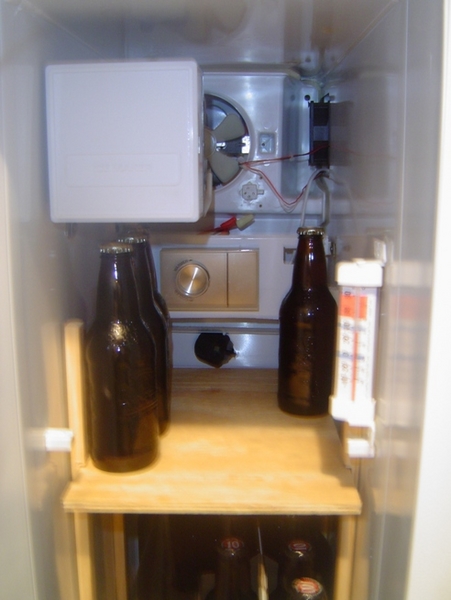billism
Well-Known Member
Hey all,
I was wondering if anyone uses a special container for maintaining the exact (or rough) temperature you desire for fermentation?
I keep my house at 75 F and didn't want to lower it, so I made a 2L x 2W x 3H feet fermentation chamber out of 3/4 inch insulated sheeting, doubled up to make 2-ply 1.5 inch walls. I went to an electronic parts store and got everything to make a home-made thermostat to power a peltier cooler with heat synchs and fans for circulation. This was mounted on top.
You can see pictures here. (Still need to dress wires properly
I have been keeping the temperature inside the chamber at a constant 69 degrees, but it can easily go lower.
Just wnated to share my method, and was wondering if anyone has done anything similar?
- Bill
I was wondering if anyone uses a special container for maintaining the exact (or rough) temperature you desire for fermentation?
I keep my house at 75 F and didn't want to lower it, so I made a 2L x 2W x 3H feet fermentation chamber out of 3/4 inch insulated sheeting, doubled up to make 2-ply 1.5 inch walls. I went to an electronic parts store and got everything to make a home-made thermostat to power a peltier cooler with heat synchs and fans for circulation. This was mounted on top.
You can see pictures here. (Still need to dress wires properly
I have been keeping the temperature inside the chamber at a constant 69 degrees, but it can easily go lower.
Just wnated to share my method, and was wondering if anyone has done anything similar?
- Bill






